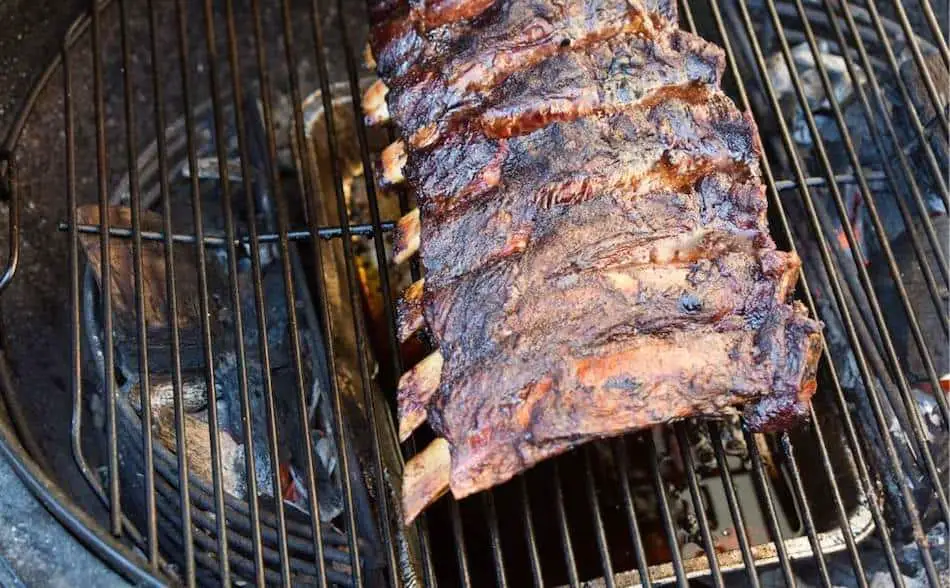
Barbecue guru Aaron Franklin is known as the brisket master. And you’ve probably Franklin smoke a rack of pork ribs. But what about beef ribs? I wanted to find out how the barbecue genius smokes a rack of delicious beef ribs. So I did some research. Aaron Franklin says he gets asked all the time how he smokes beef ribs. So finally, he made a cooking video where he teaches his beef rib recipe.
It should take 6 to 8 hours to smoke be beef ribs using the Aaron Franklin method. Prior to adding the rub, Franklin applies a Louisiana hot sauce for a binder. He then adds kosher salt and coarse black pepper for the seasoning. Franklin cooks beef ribs at 285° F. After 5 hours, he spritzes the ribs. Franklin cooks the ribs for 1 hour after wrapping. Once wrapped, Franklin begins intermittently probing the meat for tenderness. The ribs have reached the perfect tenderness when they are tender like butter.
Quick Tips
- Barbecue guru Aaron Franklin is known as the brisket master and has shared his recipe for smoking beef ribs.
- The recipe takes 6 to 8 hours to smoke and includes using a Louisiana hot sauce as a binder before adding a rub of kosher salt and coarse black pepper.
- Franklin cooks the ribs at 285° F and spritzes them after 5 hours. He wraps them and then probes for tenderness, continuing until the meat is tender like butter.
- To get the best results, Franklin recommends buying high-quality, well-marbled meat and pre-salting the ribs a few hours before smoking.
- He also suggests trying different binders and rubs for added flavor, and cooking the ribs bone-down to protect the meat from heat.
Franklin-Style Smoked Beef Ribs
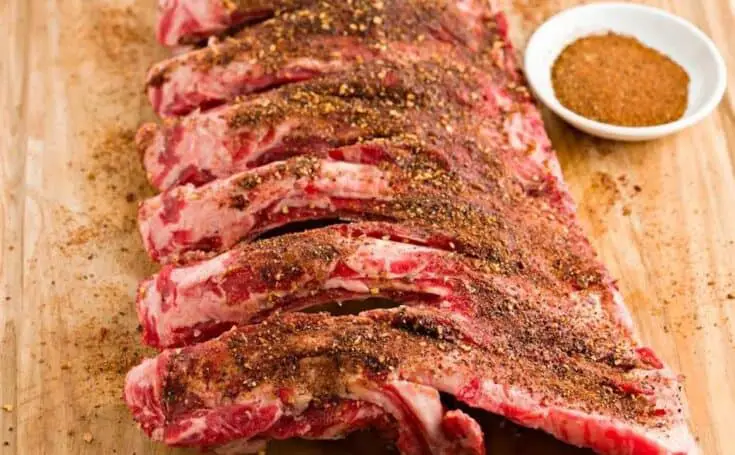
Smoked beef ribs cooked low-and-slow on a smoker.
Ingredients
- Beef ribs
- Louisiana hot sauce
- Kosher salt
- Coarse black pepper
- Spritz (apple cider vinegar or apple juice)
Instructions
1. Trim excess fat from the ribs
2. Apply a Louisiana hot sauce for a binder.
3. Cover the beef ribs in kosher salt and coarse black pepper.
4. Set the temperature of your smoker to 275°F. Throw on some hickory, pecan or oak wood.
5. Cook thr ribs for 5 hours, After 5 hours, then begin to spritz the ribs.
6. Wrap the ribs in foil, then continue cooking.
7. Once wrapped, Franklin begins intermittently probing the meat for tenderness. The ribs have reached the perfect tenderness when they are tender like butter.
Nutrition Information:
Serving Size:
100 gramsAmount Per Serving: Calories: 471 calories
“Aaron Franklin Pork Butt (Pulled Pork) Recipe And Technique”
What Are Beef Ribs?
Aaron uses regular plate ribs from the grocery store. If you can, buy ribs with good marbling because the fat will keep the meat moist and add flavor. For best results, always buy the most expensive meat you can afford. All the barbecue techniques in the world won’t save a cheap piece of meat.
Step 1- Slather The Ribs
Aaron slathers the beef ribs with Louisiana hot sauce before sprinkling the rub. You can use olive oil, yellow mustard, or another binder. A binder is important because it helps the rub stick to the meat. The rub plays an important role in the bark’s development. Beef bark is a combination of dehydrated meat, seasoning, fat and smoke. If your rub doesn’t stick properly, there will be patches in your bark. So, the slather is important for beef.
When it comes to a binder, I prefer olive oil or yellow mustard. However, if you want to follow Aaron Franklin exactly, then use a hot sauce for a binder. Franklin says the hot sauce gives the ribs an extra tang. Plus, it helps the rub stick really well.
2- Apply The Rub
If you followed Aaron Franklin’s cooking before, you would know he mostly uses a Texas-style salt and pepper seasoning. A simple Texas rub is kosher salt and a coarse black pepper. Aaron uses a 16-mesh cafe grind black pepper and Morton’s Kosher salt. Check out my in-depth article: The Ultimate Guide To Barbecue Rubs.
How To Apply Rub To The Beef Ribs
First, Aaron sprinkles the ribs with kosher salt. Don’t use regular table salt because it contains iodine. Also, table salt is too fine. Kosher salt is coarse, so it works well on beef.
With beef ribs, Franklin always applies the salt before the pepper. He does this so that you can see exactly how much salt is going on. Salting is a crucial part. Too much or too little makes a big difference in the end.
Once you’ve salted the ribs, sprinkle the coarse black pepper onto the ribs. Normally, we like a 50:50 salt to pepper ratio. However, when preparing beef ribs, Franklin goes seems to go lighter with the pepper.
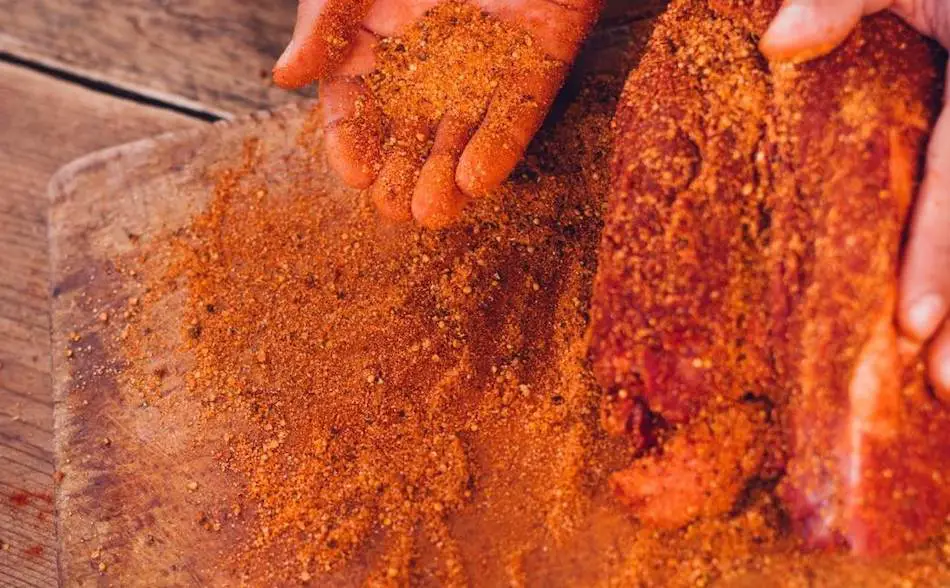
Adding More Flavor To The Rub
If you want some more flavor on your beef ribs, then maybe try something a little more adventurous than a plain salt and pepper seasoning. Here’s a recipe for a versatile beef rub that works well on all meat. If you prefer a pre-made rub, check out some rubs made by barbecue champions.
Pre Brine
Like Franklin, I like to pre-salt my meat a few hours before smoking. Salt the ribs a few hours before the cook. This will give the salt time to work its way into the meat. Salt is a great way to add extra flavor, and will help the ribs retain moisture during the long cook. To salt the ribs, apply a decent amount over the front, back and sides of the ribs.
3- Set Your Smoker’s Temperature
Aaron smokes ribs at 285° F, which is about 10° over what he normally smokes for pork ribs and brisket. Franklin cooks everything else at 275° F. Beef ribs have a nice big bone to shield the meat from the heat. When the ribs go onto the grill, Franklin lays them bone down. With the bone protecting the meat, you can cook at a slightly higher temperature—which means they’ll be done sooner!
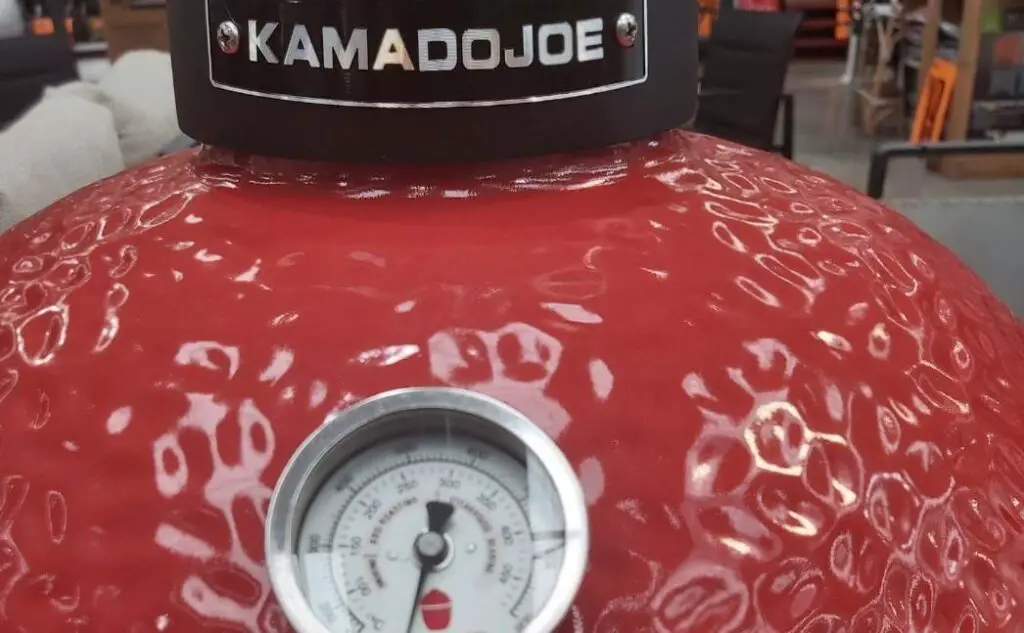
The Dangers Of Cooking Ribs Beyond 285° F
Franklin rarely cooks over 285° F. If you cook beef ribs above this temp, Franklin warns the bone marrow may get cooked out of the ribs—resulting in “gamey” tasting ribs. And that’s not what you want.
4- Spritz The Ribs
After about 5 to 5.5 hours, Franklin will give the ribs a spritz. Wetting the ribs will prevent the edges from getting too crunchy. It will also prevent the ribs from drying out. Aaron uses plain water to spritz beef ribs. He also suggests apple cider vinegar or apple juice.
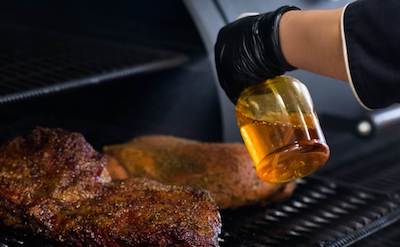
5- Probe For Tenderness
After you’ve wrapped the ribs, probe the ribs for tenderness. Franklin checks for tenderness about 5 hours into the cook. Using a thermometer, he probes the ribs for tenderness. If parts of the ribs feel tight, then they need more time.
Most experienced pitmasters go by “look and feel” rather than cooking to exact times and temperatures. This comes with experience. However, train your senses to know what to look for rather than relying on barbecue tools.
“What Does Aaron Franklin Do? We Answer 33 FAQ’s About The Pitmaster”
6- When Are Beef Ribs Done?
At about 6.5 hours into the cook, Franklin does the last check to see if the ribs are done. He takes a thermometer probe and pokes different parts of the ribs. Beef ribs are usually tender after 6.5 hours when cooked at 285°F.
How To Test Beef Ribs For Tenderness
Experience Pitmasters like Aaron Franklin suggest probing meat with a thermometer probe, or a toothpick. When poked, the meat should feel like poking a stick of butter. There should be almost no resistance. If it feels tight, then it needs more time in the smoker.
It’s difficult to give an exact time ribs will reach ideal tenderness. It will vary depending on the size and the quality of the meat. You might need to cook the ribs for 8 hours, or it might be less.
Take your thermometer probe and stick it between each rib. Franklin will poke the probe through each rib until he can feel the membrane on the other side. If it feels as soft as butter, then he knows the ribs have been cooked to perfection.
What Temperature Are Beef Ribs Done?
Franklin cooks to tenderness, not temperature. But if he were to measure the internal meat temp, they would probably read about 200° F. However, this will vary depending on each rib rack.
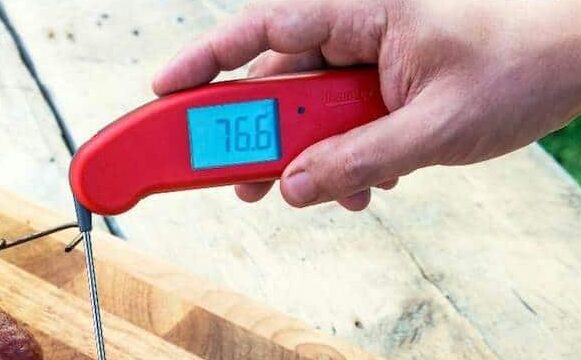
7- Remove
When taking the ribs off the smoker, Franklin is careful not to damage the bark. Rather than using tongs, Aaron gently picks up the ribs with a towel. You work so hard to nurture the bark. The last thing you want to do is rip off a chunk.
8- Resting The Ribs
Franklin will rest the ribs for 1 hour after cooking. This will allow the ribs to reabsorb some juices. If you slice meat too soon, the muscles will still be tight and pushing out liquid. Resting allows the muscles to relax. The meat will stop pushing out liquid and begin reabsorb moisture.
Preparing Beef Ribs For Smoking
Always leave the membrane attached to beef ribs because this will help keep the ribs intact. With pork ribs, we always remove the membrane. However, with beef, it’s best to leave the membrane attached. Depending on the quality of the meat, the ribs may need some trimming. As with brisket, only leave about a quarter inch of fat. Any more than this won’t render.
Does Aaron Franklin Wrap Beef Ribs?
Aaron Franklin smokes beef ribs without wrapping in foil. He smokes the ribs for about 5 to 5.5 hours before spritzing. Then he returns the ribs to the smoker for about 6 hours.
Can You Wrap Beef Ribs?
You could wrap the ribs. However, I would wait until the bark has developed. After about 5 hours, wrap the beef ribs in butcher paper. Foil works well but paper will preserve the bark better. Wrapping will help the beef ribs cook a little quicker. It will also prevent them from drying out. But I haven’t seen Aaron Franklin wrap beef ribs. Aaron wraps brisket, pork butt and pork ribs—-but not beef ribs.
My Favorite Meat Smoking Tools
Thanks for checking out this article. I hope you learned a few things. Here are some of my favorite tools I use when smoking brisket that may be useful to you. These are affiliate links, so if you decide to purchase any of these products, I’ll earn a commission. But in all honesty, these are the tools I recommend to my family and friends who are just starting out.
Meat Thermometer: There are dozens of fancy thermometers on the market, but I still use my trusty TP20. For around $50, I have a high-quality meat thermometer with two probes, and can track the temperature of my smoker with one probe, and my meat with the other probe. The ThermoPro TP20 is an Amazon Best Seller because it’s the easiest thermometer to operate, is durable, highly accurate, and comes with pre-programmed meat settings.
Instant Read Thermometer: Arguably, the second most important tool you need is a fast and accurate instant-read thermometer. These tools play an important role in the latter stages of the cook when the meat needs regular checking in multiple areas. I use the ThermoPro TP19 because it can do everything a ThermaPen can do, but for a fraction of the cost. You can check out the TP19 on Amazon here.
Wireless Thermometer: The latest thermometers on the market have no wires and can be controlled by wi-fi via your phone. Airprobe 3 is the best of this technology.
Butcher Paper: Wrapping brisket in butcher paper has become a huge trend in barbeque thanks to Aaron Franklin. Wrapping your brisket in paper will give you a nice brisket bark. However, you can’t just use any old paper, it has to be unwaxed, food grade paper. You can find it on Amazon here.
Advanced Thermometer and Automatic Temperature Controller: Once you’re ready to take things seriously, the FireBoard 2 Drive is a six-channel Bluetooth/Wi-Fi thermometer that can monitor up to 6 pieces of meat, control and graph your cook sessions on your smartphone, and attaches to an an automatic blower that will convert your charcoal smoker to a set-and-forget. This is one of the most advanced meat thermometers on the market. You can check it out on the FireBoard website here.

